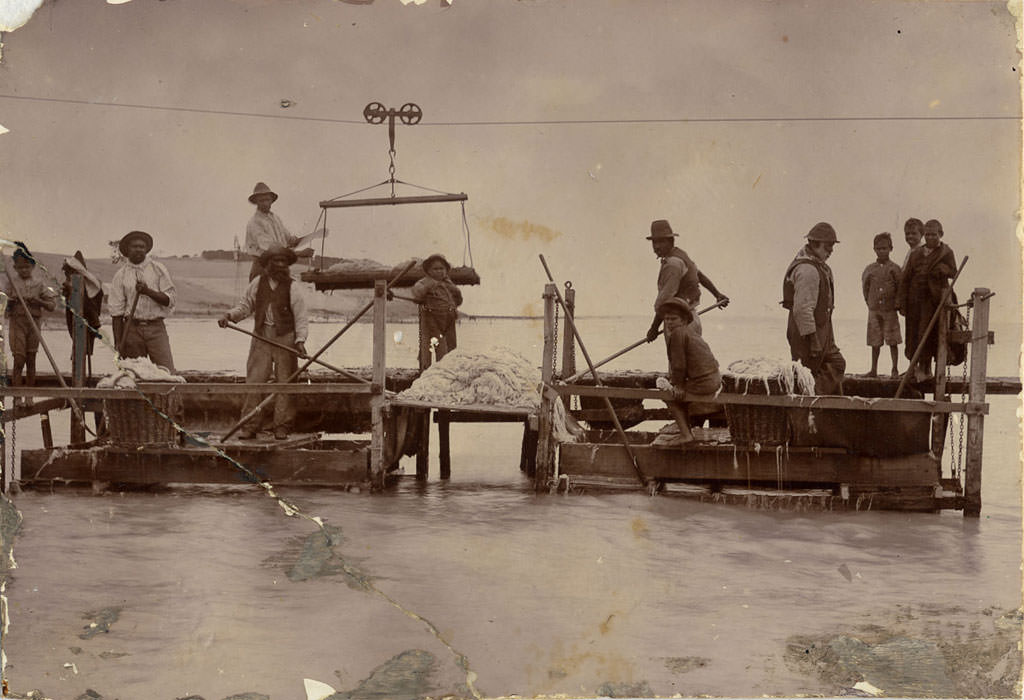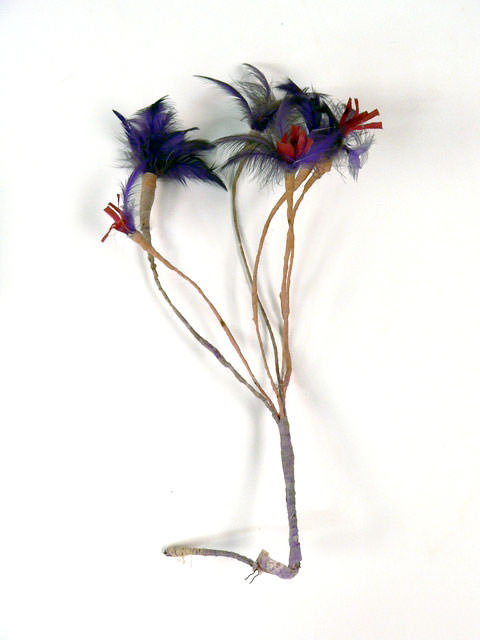Feather flowers
What do feather flowers tell us about our river systems?
These ‘feather flowers’ are made from the feathers of pelicans and other birds that inhabit the Coorong in South Australia. This bouquet was made in the 1920s by artists living at the Point McLeay Mission, which has since returned to its Ngarrindjeri name, Raukkan. The delicate colours were produced by soaking crepe paper in water to draw out the dyes and then dipping the flowers in the infused water. The feather flowers were collected by missionary Herbert E Read. His subsequent posting to the north of Australia saw the technique spread to artists there.

In 1859 the Aborigines’ Friends Association established the mission at Point McLeay, on the shores of Lake Alexandrina, South Australia. The land granted was not large enough to support the many families that would be moved there so Ngarrindjeri built alternative sustainable enterprises, such as fishing, cattle grazing, wool washing, boat making, basket weaving and tourism. In the face of the disruption caused by the European colonisation of Australia, the feather flowers were a source of supplemental income. However, they were more significant for the ecological and cultural knowledge embedded in these objects, and in the practice of making them, which was passed between generations.

Ngarrindjeri artists from the Coorong continue to weave and make feather flowers drawing on the traditions of their ancestors. Artists such as Ellen Trevorrow, who was born at Raukkan in 1955, runs workshops on weaving and teaches others about Ngarrindjeri culture and the Coorong and its wildlife. The freshwater sedges that Ellen’s grandmother gathered for weaving grow more sparsely now because of intensive irrigation upstream, reduced river flows, and a rising water table. Ellen draws attention to the plight of the Lower Lakes, Coorong and River Murray through her artwork and teaching. Against decades of severe cultural and environmental challenges the Ngarrindjeri have demonstrated the will and cooperation needed to survive, adapt and flourish.

